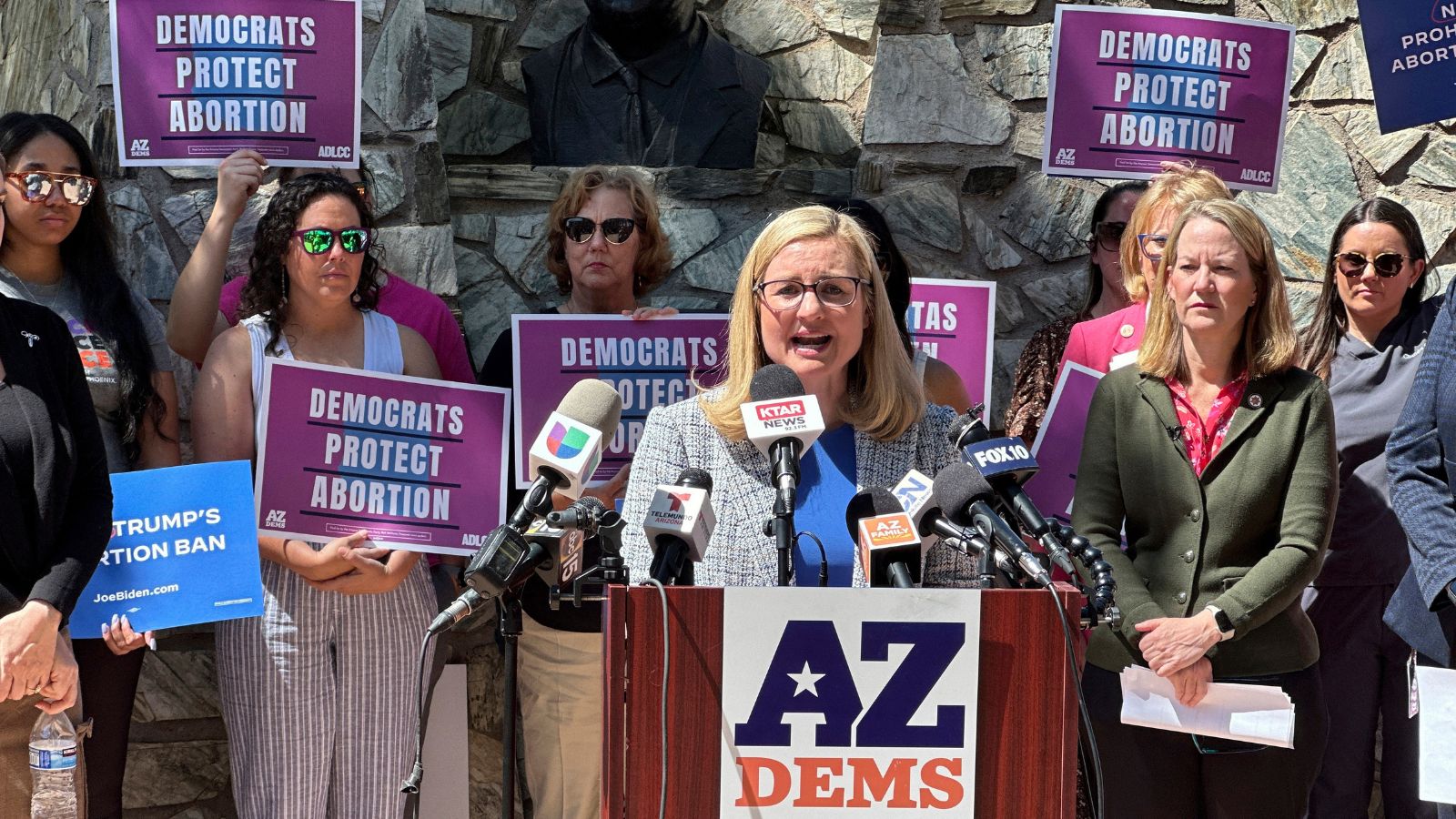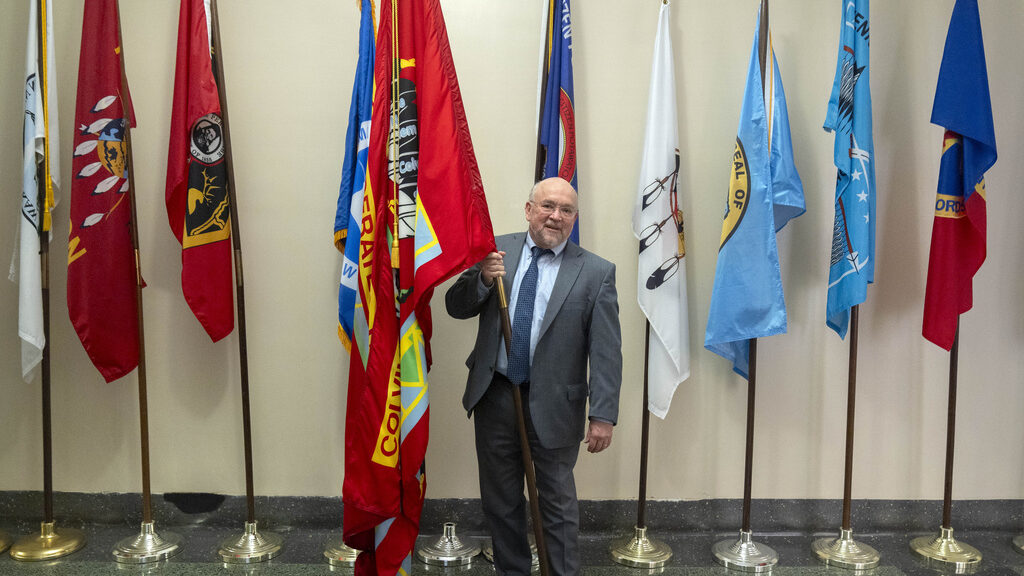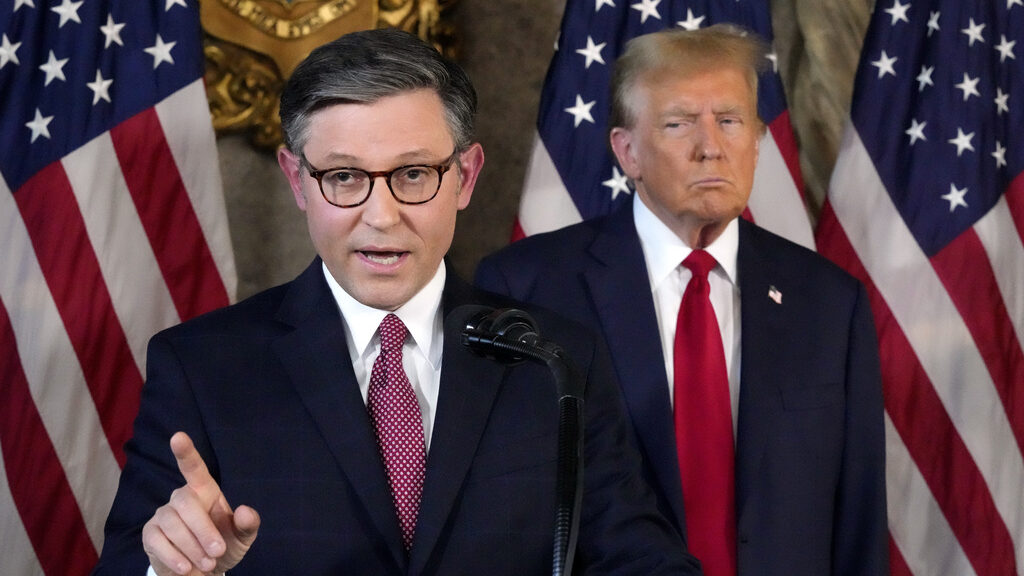Editorial Roundup: United States
Oct 18, 2022, 1:29 PM | Updated: 2:03 pm
Excerpts from recent editorials in the United States and abroad:
Oct. 17
The Washington Post on free prison phone calls
Imagine having to go into debt to stay in touch with a loved one — all while fearing for their safety and well-being. That is the grim reality facing 1 in 3 families of incarcerated people in the United States, thanks to the sky-high costs of phone calls from prison. So it is welcome news that California has moved against this cruel situation. Last month, Gov. Gavin Newsom (D) signed a law to make all phone calls from state prisons free. Now it’s time for other states, and Congress, to act.
It can cost staggering sums for people in prison to communicate with the outside world. According to the Prison Policy Initiative, the average charge for a 15-minute call is $5.74 — but prices can go as high as $24.82. Because incarcerated people are disproportionately low-income, families often have to choose between keeping in contact and paying for other needs.
This represents a clear market failure. The prison phone industry is a near-duopoly: Two companies control between 74 and 83 percent of the market. That, coupled with the fact that many facilities select which companies to use based on kickbacks rather than service, has permitted rapacious corporations to charge exorbitant rates without consequence. The industry earns more than $1.4 billion annually, largely profiting off low-income, incarcerated people of color.
Allowing inmates to affordably speak to relatives and friends would be a more humane approach — and a more effective one. Studies have shown that frequent and consistent family phone calls reduce recidivism and promote rehabilitation after release. In the long run, lowering phone costs could save taxpayers money and improve public safety.
Last year, Connecticut’s governor became the first in the country to sign legislation making prison phone calls free; the law is going into effect this month. New York City and San Francisco have taken similar steps, while several other states have reduced rates through regulation. Now, thanks to years of work from volunteers and advocates, California is the latest — and largest — jurisdiction to act. But millions of Americans in other areas are still struggling to afford such a basic comfort.
More states should enact legislation to cover costs or regulations to establish rate caps. There is also considerable work to be done at the federal level. The Federal Communications Commission can regulate fees for interstate calls, but a court decision in 2017 blocked it from setting restrictions on intrastate fees, which make up the vast majority of prison phone costs. The agency retains some authority: It recently moved forward on a rule that would help disabled people get access to improved communications technology and services, and it could crack down on companies that “double dip” by charging add-on fees.
Yet the policy that would make the greatest difference nationally is the Martha Wright-Reed Just and Reasonable Communications Act, named for a woman who had to choose between paying for her medication and calling her incarcerated grandson. The legislation would authorize the FCC to set “just and reasonable” rates for both interstate and intrastate calls, as well as video calls. Congress should expeditiously approve this bipartisan bill — and state officials across the country should continue to bring down costs for the incarcerated in whatever ways they can.
ONLINE: https://www.washingtonpost.com/opinions/2022/10/17/free-prison-phone-calls-california/
___
Oct. 13
The Wall Street Journal on Biden’s COVID-19 convenience
Is the COVID-19 pandemic over? President Biden’s answer is yes no yes no. The latest example of politically convenient pandemic schizophrenia came Thursday when the Department of Health and Human Services again extended the official public-health emergency, this time through January.
“The pandemic is over,” Mr. Biden told CBS’s “60 Minutes” only three weeks ago. “We still have a problem with COVID. We’re still doing a lot of work on it. But the pandemic is over.” Not to get all philosophical, but how can something be an emergency if it has already ended? The HHS statement this week says “a public health emergency exists and has existed since January 27, 2020, nationwide.”
This isn’t the only example of Mr. Biden talking from both sides of his N95 mask. When he decided to forgive student loans of up to $20,000 per person, the White House said this would “address the financial harms of the pandemic.” But the government had halted student loan payments since 2020, holding borrowers harmless. A month before he declared the pandemic “over,” Mr. Biden extended that student loan pause through Dec. 31.
On the southern border, the pandemic apparently ended in April, when the Centers for Disease Control and Prevention terminated President Trump’s policy of expelling migrants using Title 42 health powers. The CDC said this is “no longer necessary.” The agency cited “the development and widespread deployment of COVID-19 tests, vaccines, and therapeutics.”
A judge held that the Biden Administration couldn’t stop Title 42 enforcement, at least for now. But it’s another example of Mr. Biden’s choose-your-own-pandemic policy. Whether the crisis is over varies by agency and depends on what the White House is trying to accomplish. The HHS extension this week will freeze state Medicaid rolls and prevent ineligible recipients from being removed.
Certain work requirements for food stamps are also on hold. Yet businesses need help. Unemployment is 1.9% in Minnesota, 2% in New Hampshire, and 2.5% in Missouri. Maybe Mr. Biden hopes to keep the emergency going until the end of the next recession.
ONLINE: https://www.wsj.com/articles/bidens-choose-your-own-pandemic-policy-biden-administration-white-house-health-and-human-services-covid-11665785857
___
Oct. 18
The Los Angeles Times on the Clean Water Act
President Richard Nixon vetoed the Clean Water Act in 1972. But Congress overrode him on a bipartisan vote, and the landmark law to reverse the toxic degradation of U.S. rivers, lakes and streams took effect half a century ago today.
The law was inspired in part by the notorious 1969 Cuyahoga River fire in Ohio, in which the river itself, laden with oil and other industrial pollutants, went up in flames.
The model, though, was a California clean water law adopted the same year as the fire and the destructive Santa Barbara oil spill. The federal Clean Water Act has essentially the same goal as California’s Porter-Cologne Water Quality Control Act: to regulate the discharge of pollutants in order to safeguard the nation’s water supply for drinking, swimming and good health for human beings and the environment.
Progress has been unmistakable. It’s no longer possible for industry to legally dump solvents, chemicals and other waste into rivers and lakes and expect the rest of us to bear the cost in the form of poisonous waterways and cleanups. Rivers no longer catch fire. Harbors once again have fish, because the streams that feed them no longer bring untreated municipal waste or chemicals like PCBs. Many once-toxic streams are again swimmable.
But not all. In California and much of the West, less ample and therefore slower moving water, together with hotter temperatures, have increased the growth of blue-green algae, also known as cyanobacteria. These can release toxins and make sloughs and ponds poisonous to people who fish in or drink from them.
There is also a continuing assault from industry and its supporters in the political world. Former President Trump, for example, signed an executive order eliminating an Obama-era rule that makes clear that the act applies to western waterways that feed wetlands and major bodies of water during the rainy season but go dry in summer and fall. The act means little if it does not protect most of California, just because the hydrology here is different than in the wetter eastern part of the country.
Earlier this month, the U.S. Supreme Court heard a case that could jeopardize the act, at least to the extent that it protects sensitive wetlands. In Sackett vs. Environmental Protection Agency, owners of a plot of seasonal wetland in Idaho argue that the act applies only to the water in a wetland and not to the adjacent land from which the runoff comes. The court’s conservative majority may well agree, although questioning from the justices suggests that they may be skeptical of the plaintiffs’ interpretation.
Even if the court accepts the broader view of the Clean Water Act’s scope, the 50-year-old law should now be seen as only a starting point for necessary protection of the nation’s water. Things have changed in the last half-century, and water laws have to be updated to take into account climate change and the challenges of agricultural runoff. They have to take into account our deeper knowledge of the actual connections between all bodies of water, whether on the surface or underground, seasonal or year-round.
It took a long time for Americans to appreciate the damage they were doing to their water. The Cuyahoga caught fire repeatedly as far back as 1868. California’s rivers were devastated by hydraulic mining in a quest for gold and other minerals; there were few objections at the time. Pollution was widely seen as a sign of American civilization subduing a wild continent and putting it to use in the service of human wealth and progress. And besides, there was always another pond or stream to be used for drinking water.
But now we know more about the costs of environmental destruction. We can’t wait another 50 years before updating our laws to protect our water supply.
ONLINE: https://www.latimes.com/opinion/story/2022-10-18/clean-water-act
___
Oct. 16
The Guardian on central bankers
Generals are often criticized for fighting the last war. What about central bankers who seem unable to grasp the lessons of the last emergency, still less to anticipate the next one? By putting central banks in charge of the response to the current crisis, governments risk a worldwide recession precipitated by excessive rate rises.
That was the warning from the United Nations Conference on Trade and Development (Unctad) this month, and it arrived not a moment too soon. Central banks cannot bring inflation down at a socially acceptable cost. Raising interest rates as pandemic support ends will hit incomes. The result will be akin to the “shock therapy” inflicted on voters by austerity policies after the financial crisis of 2008. The difference between then and now is that monetary tightening by central banks, rather than cutting government spending, is being used to engineer a downturn.
The U.S. Federal Reserve is the main culprit. Where it leads, others follow – leading to everyone squeezing their own economy simultaneously. The result, warns Unctad, could see $17tn wiped off global GDP. The Fed’s stance has already caused the currencies of about 90 developing countries to weaken against the dollar this year, making it harder for them to purchase goods priced in dollars, or pay back dollar-denominated debt. Many are plagued by blackouts and food shortages.
The surge in inflation from the end of last year belied hopes that this would be a temporary inconvenience. Russia’s invasion of Ukraine sent a shock wave through markets. Yet rising prices have not come from government spending or wage pressure. Inflation has been amplified by firms able to raise their markups to profit, first during the global recovery in 2021 and then in 2022, through excessive speculative trades on the backs of the world’s poor.
Companies have too much clout in world affairs. Half of the inflation in the U.S. is driven by higher profit margins – compared with 10% historically. In food, just four companies account for at least 70% of global grain trade, with an incentive to hold stocks back until prices peak. Financial investors are also cashing in. Seven out of 10 buyers of wheat futures contracts are now speculators. In 2018, they accounted for just 23% of purchasers. The record profit of $6.7bn made by the commodity trader Cargill last year makes the case for windfall taxes.
In the developing world, Unctad says growing corporate muscle has seen a fall in labor costs, while firms’ profitability has increased. When higher profit margins are a source of higher prices, raising interest rates is inefficient and unfair because the tightening needs to be larger to affect inflation, damaging growth and employment.
Since the 1980s, voters have forfeited economic power to the free market in exchange for stability and peace. They now feel duped. Debt-financed speculation and asset-price appreciation are accelerating a global inflationary crisis. There are obvious ecological reasons why the global energy system cannot carry on as it has. Greener and more redistributive policies are needed. Financial institutions ought to be rewired to serve a broader public remit. Interventionist government – armed with progressive taxes, anti-trust measures and price controls – should be the order of the day.
Unctad is right: the independence of central banks from any social goals is unsustainable. The suggestion of the Bank of England governor, Andrew Bailey, that even higher interest rates were needed after the new U.K. chancellor signaled public spending cuts and tax hikes sounds injudicious. The COVID crisis revealed that the trade-off where governments must choose between high deficit spending or low interest rates only exists if central banks want it to. Mr. Bailey has exposed the Bank to near comical U-turns for fear of being seen as subservient to politicians. His strategy risks plunging more people into poverty. Monetary policy is not apolitical, but it is undemocratic. That should change.
ONLINE: https://www.theguardian.com/commentisfree/2022/oct/16/the-guardian-view-on-central-bankers-dont-put-them-in-charge-of-the-crisis
___
Oct. 12
China Daily on U.S. tariffs
Although the Office of the United States Trade Representative claimed that U.S. domestic industries benefit from the tariff actions in the Section 301 investigation of China last month, the call from industries to end those tariffs, which the previous Donald Trump administration imposed to win the initiative in trade talks with China, has always been there.
In the industries most affected by tariffs and Chinese “retaliations”, U.S. manufacturing jobs have fallen more than 2%, and spurred by the record-high inflation in the country, many senior U.S. officials, including United States President Joe Biden, secretary of commerce, treasury secretary and the USTR, have touched upon the possibility of reviewing the tariffs on various occasions.
By any measure, the tariffs have done serious damage to the U.S. economy. The tariffs have pushed up consumer prices in the U.S., negatively influenced normal economic and trade cooperation between the world’s top two economies and disrupted global supply chains, with U.S. wholesalers, retailers and consumers bearing the brunt of the pain.
The “zero-sum” tariffs, which Trump introduced and Biden has persisted with, have never delivered what was promised. The economic and trade cooperation between the two sides has always been of a win-win nature. That is something that is decided by the law of the market and the complementarity between the two economies, and it cannot be reversed by politics.
The trade volume between China and the U.S. from January to August stood at $514.959 billion, up by 9.5% year-on-year. Specifically, China’s exports to the US amounted to $397.15 billion, up 12.2%; China’s imports from the US reached $117.81 billion, up 1.3%.
And in the first half of this year, the actual U.S. investment in China increased by 26.1% year-on-year, despite the U.S. administration’s attempts to disengage with China.
Although China has always attached great significance to the U.S. market and investment, the tariff war and decoupling efforts of the U.S. side have unavoidably prompted it to divert to other markets, such as the Southeast Asia and other emerging economies taking part in the Belt and Road Initiative, to manage and prevent risks.
Embarrassingly, while swallowing the teeth broken by the blow it has inflicted on itself, the U.S. was forced to put an ugly show at the World Trade Organization to defend its absurd tariffs by moralizing the trade war it started with China.
The harm the U.S. has done to itself with the irrational tariffs has become ever more evident over the past more than four years. The question now is for how long will the U.S. continue to bear the pain of weaponized trade which is in no parties’ interests.
ONLINE: https://www.chinadaily.com.cn/a/202210/12/WS6346af65a310fd2b29e7c173.html
Copyright © The Associated Press. All rights reserved. This material may not be published, broadcast, rewritten or redistributed.









